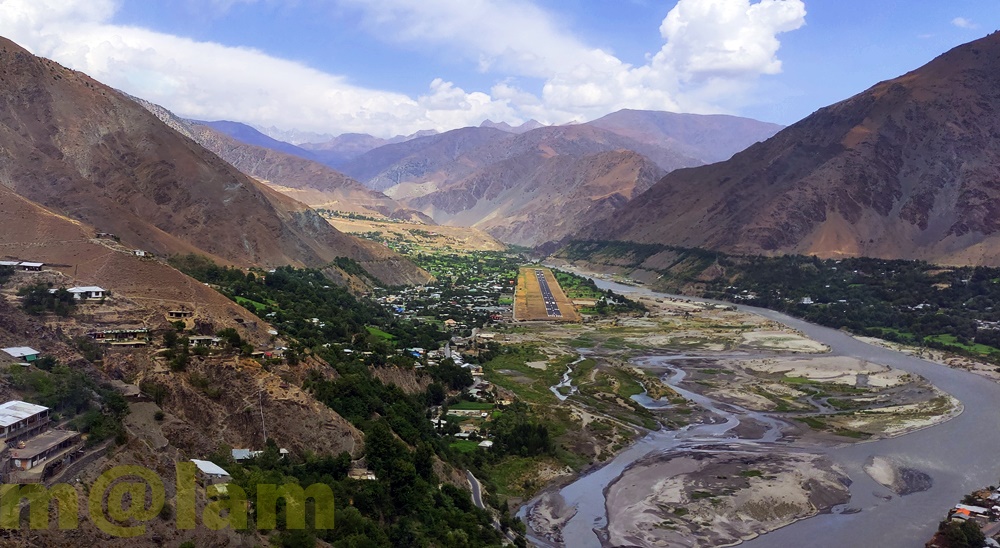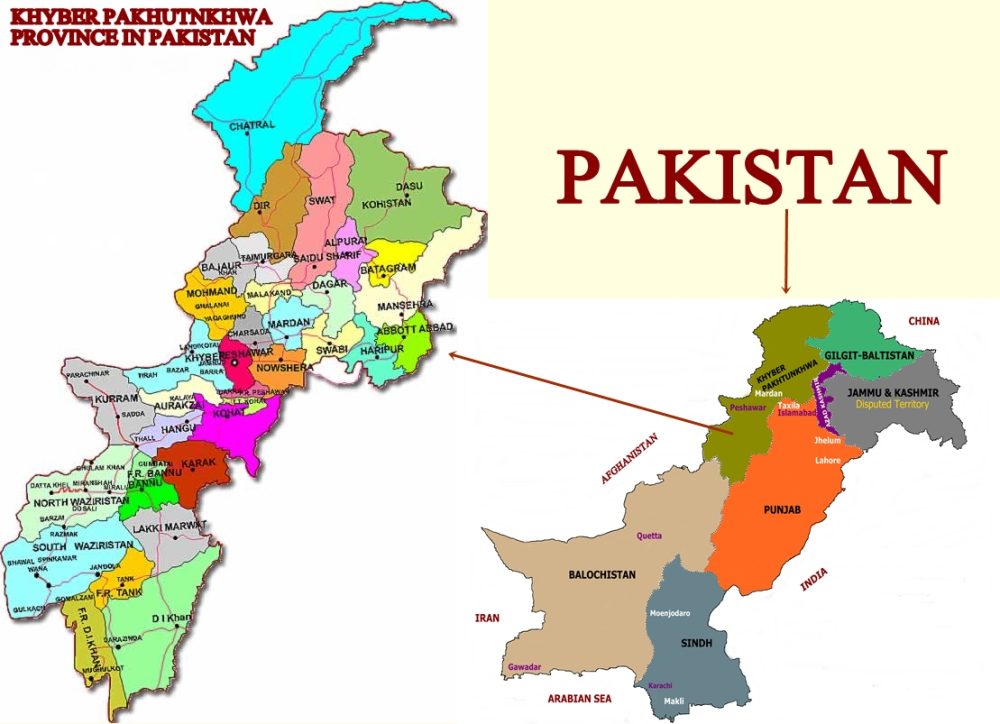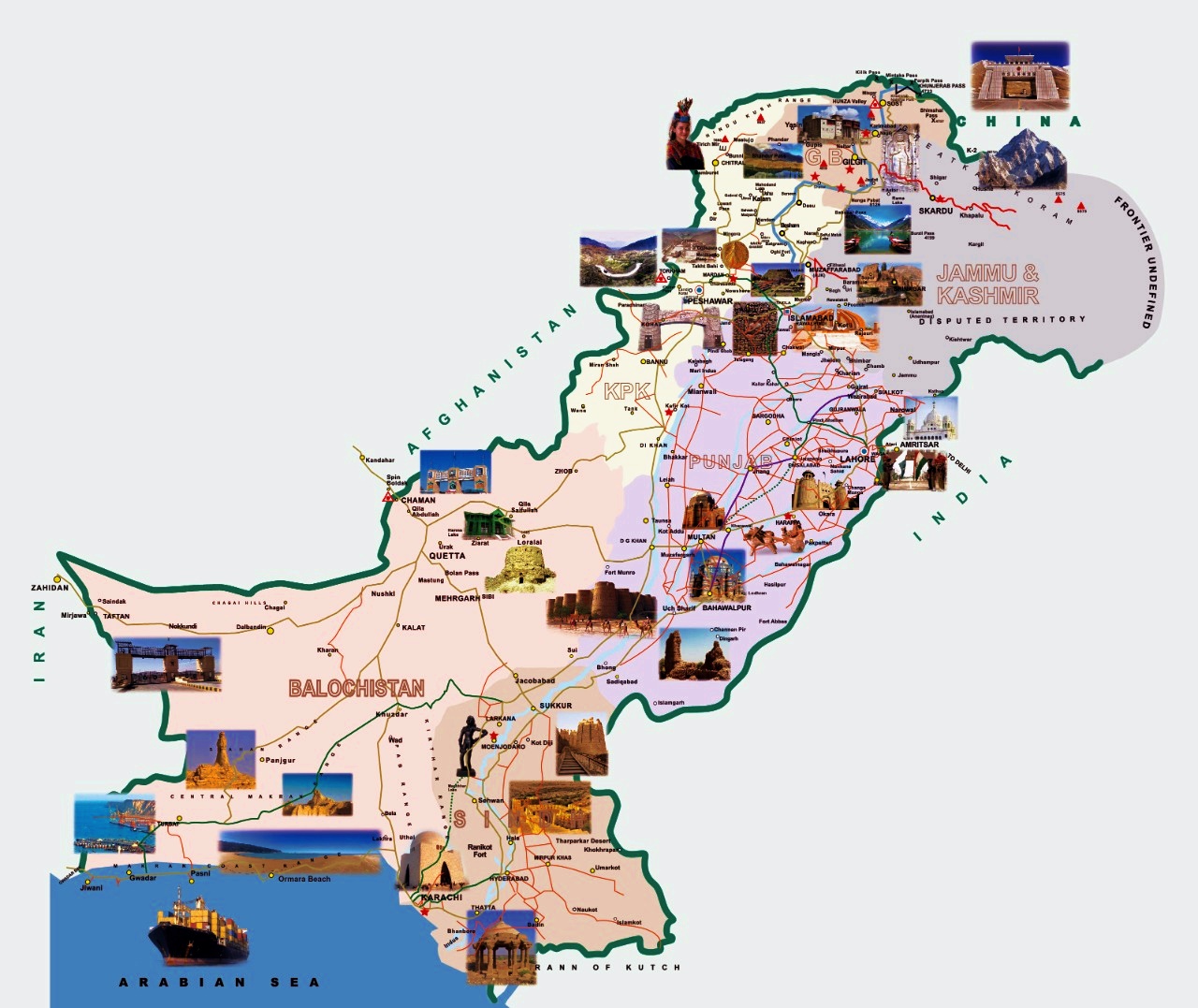Chitral, a region in the Khyber Pakhtunkhwa province of Pakistan known for its natural beauty and cultural richness, offers several tourist attractions. Here are some notable places to visit in Chitral:
Chitral Town
Chitral Town is a bustling hub filled with vibrant markets and bazaars that provide a unique insight into the local way of life. These lively centers exhibit a diverse array of handicrafts, textiles, spices, and souvenirs, offering visitors the opportunity to fully immerse themselves in the vibrant colors and rich flavors of Chitral.
Exploring the streets of the magnificent Chitral Town divulges a harmonious blend of traditional and contemporary architecture. The buildings feature intricate designs and elaborate frontages that beautifully showcase the region’s rich cultural heritage. This visual spectacle is sure to captivate architecture enthusiasts, providing a delightful journey through the town’s unique and fascinating aesthetic.
Shahi Masjid
The Shahi Masjid stands as a magnificent piece of architecture, constructed by Shujaul Mulk, the Mehtar of Chitral, in 1924 A.D. Shujaul Mulk, the ruler of Chitral from 1895 to 1936, left a lasting legacy in the form of this grand mosque. The building itself is a remarkable example of architectural dexterity, constructed with pure white marble and adorned with intricately engraved art.
Situated on the bank of the Chitral River, adjacent to the Chitral Fort, the Shahi Masjid is not only a place of worship but also a testament to the rich customs and culture of the Chitral aristocracy. The architectural details of the mosque reflect the traditions of the region, creating a visual representation of Chitral’s cultural heritage. The Shahi Masjid stands as a significant landmark, inviting visitors to appreciate its historical and artistic significance.
Chitral Fort
The Chitral Fort, also known as Shahi Qila, is a historic fortification located in Chitral town, Khyber Pakhtunkhwa, Pakistan. Positioned on the banks of the Chitral River, it holds a strategic location not far from the Shahi Masjid. The fort is believed to have been initially constructed in 1774 during the reign of Mohtaram Shah Katur II and later restored in 1911 by His Highness Sir Shuja ul-Mulk.
Originally serving as the barracks for the guards of the Mehtar of Chitral, the fort became the personal property of the last ruler of Chitral after the merger of Chitral State in 1969. Presently, it is occupied by the ceremonial Mehtar, Fateh-ul-Mulk Ali Nasir. Notably, the fort has undergone renovations, particularly to the old Darbar Hall and staterooms, following damages incurred during the earthquake of 2015. The Chitral Fort stands as a testament to the region’s historical significance and architectural heritage, offering visitors a glimpse into its rich past.
Chitral Museum
The Chitral Museum stands as a custodian of the unique culture and art of the region, preserving the heritage of ancestors for future generations. Established on July 8, 2010, the primary purpose of the museum is to safeguard Chitral’s cultural legacy for tourists and locals alike. The museum is divided into two distinct sections: the Ethnological Gallery and the Archaeological & Kalash Gallery.
In the Ethnological Gallery, visitors encounter artifacts such as jewelry, instruments, and furniture from the 12th century, providing a glimpse into the lifestyle of Chitral’s ancestors. On the other hand, the Archaeological & Kalash Gallery focuses on items related to the Kalash, showcasing the cultural heritage with connections to Greek influences. Particularly noteworthy are the artifacts associated with their gods and goddesses, offering insights into the spiritual and religious practices of the Kalash people. The Chitral Museum serves as a valuable resource for those interested in exploring and understanding the rich cultural history of the region.
Governor’s Cottage
The Governor Cottage stands as a beautiful and graceful example of Chitrali architecture, showcasing the region’s glorious and distinctive construction style. Situated on elevated grassland, surrounded by mountains, the cottage provides a picturesque setting. On a clear day, visitors can admire the majestic Trich Mir Mountain from this location.
Previously reserved, the place is now open to the general public. Inside, one can find a collection of well-preserved historical objects that offer insights into the rich history of the region. The Governor Cottage provides a unique opportunity for visitors to experience and appreciate the royal living style of the Mehtar of Chitral. It serves as a testament to the cultural and historical heritage of the area, allowing individuals to connect with the past and the architectural traditions of Chitral.
Chitral Gol National Park
Chitral Gol National Park, situated 5,000 meters above sea level in the Lower Chitral District, is a two-hour drive from Chitral town and spans 7,750 meters. This park is renowned for its abundant wildlife and panoramic views of valleys, glaciers, and streams. Formerly considered the private property of the Mehtar of Chitral until 1983, the park’s status has been disputed and is subject to ongoing litigation between the Mehtar’s heirs and the Government of Pakistan.
The park encompasses three valleys with glaciers and springs feeding into an 18-kilometer stream flowing east into the River Chitral. Rich in cedar trees, the park provides a habitat for diverse wildlife, including the endangered Kashmir Markhor. Other notable mammals include the Siberian ibex, Snow leopard, Ladakh Urial, Himalayan black bear, Himalayan Wolf, Red fox, Eurasian otter, and Yellow-throated marten.
Barmoghlasht
Barmoghlasht, a renowned summer retreat in Chitral, is nestled amidst towering mountains and lush greenery, located 14.5 kilometers from Chitral town. Highlighting the area is the former Mehtar’s Summer Fort, strategically perched at an elevation exceeding 2800 meters, providing a captivating view of the city. Notably, it is the ancestral building of the Chitral royal family, adding historical significance to its charm, set amid vibrant green pastures.
Accessible by a 40-minute drive from Chitral City, Barmoghlasht is especially enchanting in May and June when spring brings forth lush greenery and vibrant blooms. The resort offers an array of activities, making it an ideal destination for paragliding, hiking, and bird watching in the summer, while also providing opportunities for skiing during the winter months. Tourists are drawn to Barmoghlasht throughout the year, seeking adventure in every season.
Gram Chashma
Garam Chashma, translating to “Hot Spring,” is a branch valley of the Chitral District, located 45km northwest of Chitral. Situated at an elevation of 2550 meters (8389 feet), it stands as one of the highest human settlements in the Hindukush ranges. A prominent tourist attraction in Chitral, Garam Chashma is renowned for its hot water springs, believed to offer remedies for skin diseases and chronic headaches, as well as for its trout fish and precious stones.
The hot spring waters have led to the construction of bathing facilities for visitors, allowing them to experience showers in these therapeutic springs. The Sulphur deposits in the area elevate the water temperature beyond the boiling point, reaching nearly 2600C.
The Lotkoh River, also known as the Garam Chashma River, flows from the lofty peaks of the Hindu Kush and is a haven for brown trout fish. Additionally, the Dorah (Do Rah) Pass, standing at 14,940 feet (4,554 meters), connects this part of Pakistan with Badakhshan, an adjacent province of Afghanistan.
Booni
In the crown of Chitral Valley, one of the jewels is Booni. Like other valleys, Booni is very beautiful and worth watching the town of Chitral. The landmasses of Booni are fan-shaped formed due to glacial deposits which are a major attraction for tourists. The town is highly developed in terms of educational facilities provided to the natives. The weather of Booni in summer is warm due to direct exposure of the valley to sunshine. In winter, the weather is extremely cold. The place is also famous for the growth of different vegetables, fruits, and crops.
Shandur Pass
Shandur Pass or “Roof of the World” is the highest mountain pass located at an elevation of 3,700 meters. It is located between the Chitral district of KPK and the Ghizer district of Gilgit Baltistan. For adventurous lovers, this is the perfect place to visit. The roads are rough, adventurous, and scenic suitable for a 4WD. The best time to visit Shandur Pass is between late April and early November. The Shandur Polo Festival is organized every year in July. In the festival, teams of Chitral and Gilgit Baltistan play polo matches on Shandur Top.
Kalasha Valleys
The Kalasha Valleys —Bumburet (Mumuret), Rumbur, and Biriu (Birir) — situated amidst the picturesque Hindu Kush mountain range in Chitral are renowned for their cultural richness and unique traditions. Among them, Bumburet is the largest and most populous, situated 36 km from Chitral. Rumbur lies to the north of Bumburet, while Biriu (the smallest) is located to the south. Inhabited by the Kalash people, these valleys offer a distinct experience for visitors. The Kalash community has its language, follows a unique culture, and celebrates festivals such as the Chilam Joshi Festival (Kalash Spring Festival), Uchal Festival (Kalash Summer Festival), and Choimus Festival (Kalash Winter Festival). These vibrant celebrations, coupled with the remarkable lifestyle of the Kalash people, make the Kalasha Valleys a captivating attraction for tourists. Access to the three main valleys is facilitated by a road from Ayun in the Kunar Valley.
The allure of Kalash peaks between April and October, a period marked by lush landscapes and vibrant colors. The Kalasha Valleys contribute significantly to this charm, providing a unique cultural experience against the backdrop of the stunning natural surroundings. The transition from summer to winter is evident in Chitral, with the valley adorned in various hues during the summer and covered in a pristine blanket of white snow during the winter. The Kalasha Valleys stand as a testament to the diversity and cultural richness that make Chitral an enchanting destination for those seeking a unique and immersive travel experience.
Golain
Stretching on 528.93 km2, Golain Valley is located 25 kilometers east of Chitral on the main Chitral-Mastuj Road and is renowned for its hydroelectric powerhouse project, capable of generating 108 MW. The Valley is home to 53 small and large glaciers originating from a maximum elevation of 6143m above sea level and extending down to a minimum elevation of 3917m above sea level.
Despite its glacial features, the valley is particularly famous for its lush green meadows and pastures. Golain is a grassy land that never fails to amaze, featuring tall fruit-laden trees, a rare variety of flora, a pleasant climate, a tremendous waterfall, and the cold waters of the stream. All these elements combine to captivate anyone fortunate enough to experience the enchanting and ravishing beauty of Golain Valley.
Ayun Valley
The Ayun Valley in Chitral is strategically situated along the banks of the Chitral River, approximately 11 km before reaching the main Chitral town when traveling from Peshawar or Islamabad. This lush green valley holds significance as a gateway to the Kalash Valleys. The valley is characterized by the confluence of the Chitral River and the Bamburet River. The Bamburet River gracefully traverses the entire length of the Ayun Valley. The water from this river serves multiple purposes, including the generation of electricity for the Ayun village, irrigation of the surrounding land, and as a source of drinking water for the local inhabitants.
The valley’s verdant landscapes and the merging rivers contribute to its natural beauty, making Ayun Valley not only a vital point of access to the Kalash Valleys but also a destination with its scenic allure. The utilization of the river’s resources for various essential needs underscores the practical significance of the Ayun Valley in the local community’s daily life.
Tirich Mir
Tirich Mir stands proudly as the highest peak in the Hindu Kush Mountain Range, soaring to an impressive elevation of 7,708 meters (25,289 ft.). This majestic peak holds the distinction of being the tallest mountain outside the Himalaya-Karakoram range. For travelers exploring the Chitral Valley, witnessing the sunrise and sunset from Tirich Mir’s summit is a must, offering a breathtaking spectacle that is truly unforgettable. Numerous hotels and resorts in the vicinity provide excellent vantage points for capturing the perfect shot of Tirich Mir.
Nestled in the Mulkow Valley within the Chitral district, this peak’s commanding presence contributes to the allure of the surrounding landscape. The etymology of Tirich Mir is intriguing, with “Trich” translating to darkness and “Mir” to king. Therefore, the name can be interpreted as the “King of Darkness,” possibly alluding to the shadows cast by Tirich Mir on the Wakhan side. The mountain’s average temperatures vary from 13°C in July to a chilly -12°C in the winter months, adding to the challenging yet captivating nature of this imposing natural landmark.
Toshi Game Reserve
Toshi Game Reserve, situated on Garam Chashma Road in Chitral, is a captivating destination worth exploring. Spanning over 1,000 hectares, this reserve is a haven for Markhors, making it a unique and significant natural site. Markhors, a species of wild goats known for their majestic spiral horns, roam freely in herds across the hillsides of the reserve. The breathtaking sight of these creatures grazing during sunrise or sunset adds to the charm of Toshi Game Reserve.
To fully appreciate the experience, it’s advisable to bring binoculars along, especially if the Markhors are situated at a distance. This allows visitors to observe these magnificent animals up close and marvel at their natural behavior. The reserve’s location in Chitral, known for its scenic beauty, further enhances the overall appeal of Toshi Game Reserve as a must-visit destination for nature enthusiasts and wildlife lovers.









